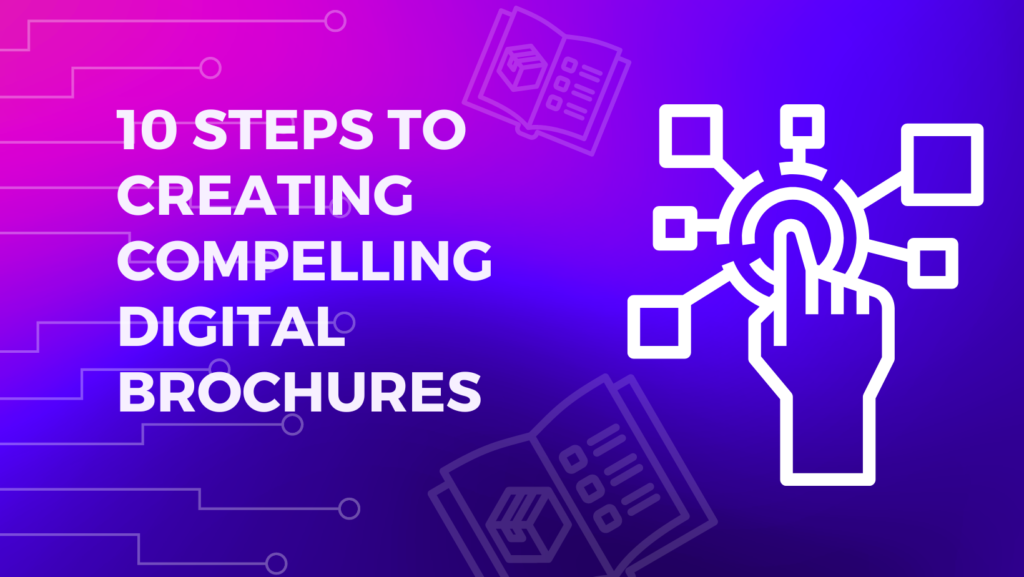
Creating digital brochures that captivate and convert your audience requires a blend of design, content, and interactivity. Here are ten essential steps to ensure your digital brochures are both engaging and effective:
1. Develop a Clear Concept
Begin with a thorough understanding of your target audience and the key message you want to convey. Research your audience’s preferences and pain points to tailor the brochure’s content to their needs. Define the brochure’s purpose—whether it’s to inform, persuade, or entertain—and ensure every element aligns with this objective. A well-defined concept will provide a cohesive direction for your design and content.
2. Invest in Eye-Catching Design
A visually appealing design is crucial for capturing attention. Use high-quality images and graphics that reflect your brand’s identity. Maintain a consistent color scheme and choose readable fonts that enhance the overall look without overwhelming the reader. Balance text and visuals with ample white space to avoid a cluttered appearance. Tools like Adobe InDesign or Canva can help you create professional and attractive designs.
3. Craft Engaging Content
Your content should be concise, engaging, and relevant. Start with a strong headline that grabs attention and clearly conveys the brochure’s main message. Break up the text with subheadings and bullet points to make it easy to scan. Use a conversational tone to connect with readers, and focus on the benefits of your products or services rather than just features. Include testimonials or case studies to add credibility and relatability.
4. Add Interactive Elements
Incorporate interactive elements such as clickable links, embedded videos, and animations to enhance engagement. These features not only make the brochure more dynamic but also provide additional information without overwhelming the reader with text. For example, a clickable product link can lead to a detailed webpage, while a video can demonstrate a product in action. Interactive elements create a more immersive and engaging experience.
5. Optimize for Mobile
With the growing use of mobile devices for browsing, ensuring your digital brochure is mobile-friendly is essential. Use responsive design techniques to ensure the brochure adapts to different screen sizes without losing its appeal or functionality. Test your brochure on various devices to ensure readability and usability. A mobile-optimized brochure can reach a wider audience and provide a seamless experience for users on the go.
6. Include a Clear Call-to-Action (CTA)
A compelling call-to-action (CTA) is essential for guiding readers to the next step. Make your CTA prominent and straightforward, whether it’s encouraging readers to visit your website, sign up for a newsletter, or make a purchase. Use action-oriented language like “Discover More,” “Sign Up Today,” or “Get Started.” Ensure the CTA stands out visually, using contrasting colors or buttons to draw attention.
7. Use Analytics
Leverage analytics tools to track how your audience interacts with your digital brochure. Metrics such as page views, time spent on each page, and click-through rates can provide valuable insights into what resonates with your audience. Use this data to refine your content and design strategies, making iterative improvements that enhance user engagement and satisfaction. Google Analytics and similar tools can help you gather and analyze this data effectively.
8. Tell a Story
Storytelling is a powerful way to engage your audience and make your brochure memorable. Instead of just listing features and benefits, weave them into a compelling narrative. Highlight customer success stories or case studies that illustrate the real-world impact of your product or service. A well-told story can create an emotional connection with your audience, making your message more persuasive and memorable.
9. Keep It Updated
Regularly updating your digital brochures ensures that the information remains accurate and relevant. Outdated content can mislead customers and damage your credibility. Schedule periodic reviews to refresh content, images, and interactive elements. Keeping your brochure current reflects a dynamic and attentive brand that stays ahead of trends and continuously strives to meet customer needs.
10. Test and Iterate
Continuous improvement is key to creating effective digital brochures. Conduct A/B testing on different designs, content layouts, and interactive features to see what works best. Gather feedback from your audience through surveys or direct interactions. Use these insights to make data-driven adjustments and refine your brochure. Iterative testing and improvement help you stay responsive to audience preferences and market trends.
Conclusion
By following these ten steps, you can create compelling digital brochures that not only capture attention but also drive action. Focus on strong design, engaging content, and interactive elements to enhance your digital brochure strategy and achieve your marketing goals. Embrace these techniques to deliver impactful content that resonates with your audience.







